




























ronment





BY SARA EISINGER STAFF WRITER
ST. ROSA — Celebrating special times to generate everlasting memories was at the center of Jim and Lisa Herdering’s hearts when they opened the rustic doors to MillCreek Barn in St. Rosa in 2020.
It was there where their daughter and son-in-law, Megan and Andrew Buness, celebrated their
wedding reception on Sept. 12, 2020. This date furthermore commemorates MillCreek Barn’s first-ever party.
“It is an open-concept barn in the countryside that is built to host your special event of up to 50 people,”
Lisa Herdering said. “At MillCreek, we believe in the power of community and the joy of shared experiences. That’s why we host a range of events throughout the year, from yoga retreats to family-friendly dinners under the lights.
Outside is a wooded area with a grain bin bar and fire table. Lisa said the setting is perfect for graduation parties, bridal showers, grooms’ dinners, anniversaries, baby showers and small weddings.
“I am totally open to many things being hosted in here,” she said.
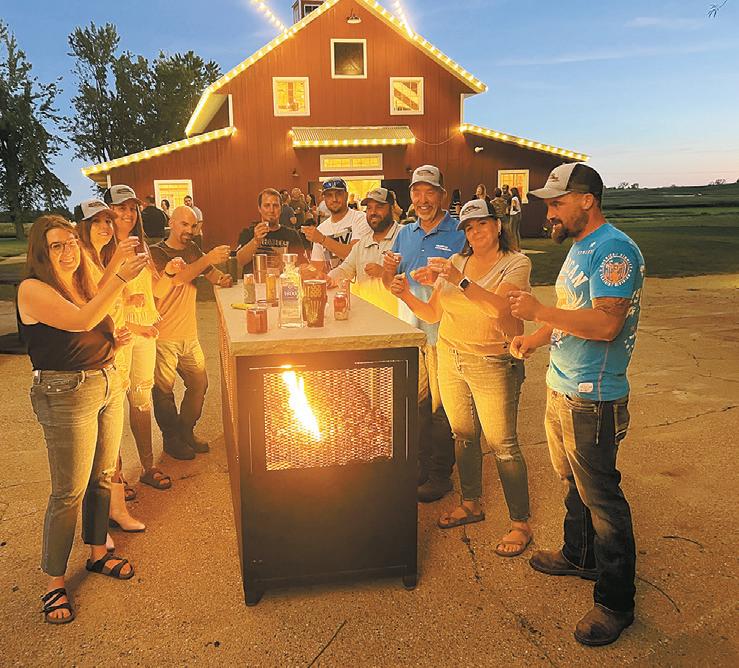

Our goal is to cultivate a sense of belonging and unity, where individuals can come together.”



MillCreek is a venue where local talent can show off their skills, network and sell products.
“In February, we had Galentine’s Night, so I had 12 vendors in here that people could come and buy from,” Lisa said. “They sold crafts, soaps, essential oils, flowers, beautifully decorated cookies, clothing, honey, candles, sourdough bread, fire rings and more. I enjoy watching young entrepreneurs achieve their dreams.”

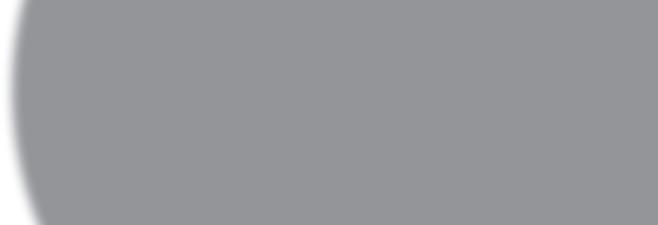

MillCreek Barn hosted a Mother’s Day weekend event, serving approximately 65 people.
SUBMITTED Megan Buness (clockwise, from left), Brianna Hays, Emily Herdering, Matt Heinen, Austin Douvier, Andy Blommel, Craig Servatius, Jim Herdering, Lisa Herdering and Chris Heinen gather around the fire table celebrating their work together at Millwood Metalworks, now home to MillCreek Barn, near St. Rosa. Jim and Lisa Herdering owned and operated Millwood before selling it approximately two years ago.
“We had honey and scones made by local vendors,” Lisa said. “We had sandwiches and dessert from D’lish (D’lish Coffee and Catering) in Freeport.”
People have even hosted employee meetings and quilting groups at MillCreek Barn and often have their events catered.
“For small corporate
events, this has worked out really well,” Jim Herdering said. “They have set up cornhole outside, here, and some other games.”
Herdering page 2

















Published by
Star Publications
Copyright 2024
522 Sinclair Lewis Ave. Sauk Centre, MN 56378
Phone: 320-352-6577
Fax: 320-352-5647
NEWS STAFF
Mark Klaphake, Editor Mark.k@dairystar.com
Tiffany Klaphake, Assistant Editor tiffany.k@dairystar.com
Sara Eisinger, Writer
sara.e@star-pub.com
Emily Breth, Writer emily.b@star-pub.com
Carol Moorman, Writer carol@melrosebeacon.com
Natasha Barber, Writer natasha@saukherald.com
Ben Sonnek, Writer ben.s@saukherald.com
Hans Lammeman, Writer hans.l@star-pubs.com
Story ideas send to: annika@star-pub.com
SALES STAFF
Robin Brunette, 320-293-5911
robin@saukherald.com
Missy Traeger, 320-291-9899 missy@saukherald.com
Tim Vos, 320-845-2700 tim@albanyenterprise.com
Mike Schafer, 320-894-7825
mike.s@dairystar.com
Neil Maidl, 320-292-4454
neil.m@star-pub.com
Jaime Ostendorf, 320-309-1988 jaime@star-pub.com
Bob Leukam, 320-260-1248
bob.l@star-pub.com
PRODUCTION STAFF
Amanda Thooft
Nancy Powell
Maddy Peterson
Cheyenne Middendorf
Karen Knoblach
Annika Gunderson
Nadiia Griepentrog
Deadlines:
Country Acres will be published the first Saturdays of April, May, June, September, October and November, and the third Saturday of every month. Deadline for news and advertising is the Friday a week before publication.
ISSN: Print 2834-6440 Online 2834-6459
(Left) Lisa Herdering carries decorations up the spiral stairwell May 30 in MillCreek Barn near St. Rosa. The upper level area contains some books and toys to keep small children occupied according to their age levels.


MillCreek Barn is centered around community.
“Belonging to a community, especially in a small town, is a great gift,” Lisa said. “At MillCreek, we believe in the power of community and the joy of shared experiences.”

ST R T

Publications bli ti
“The newspaper of today is the history of tomorrow.”


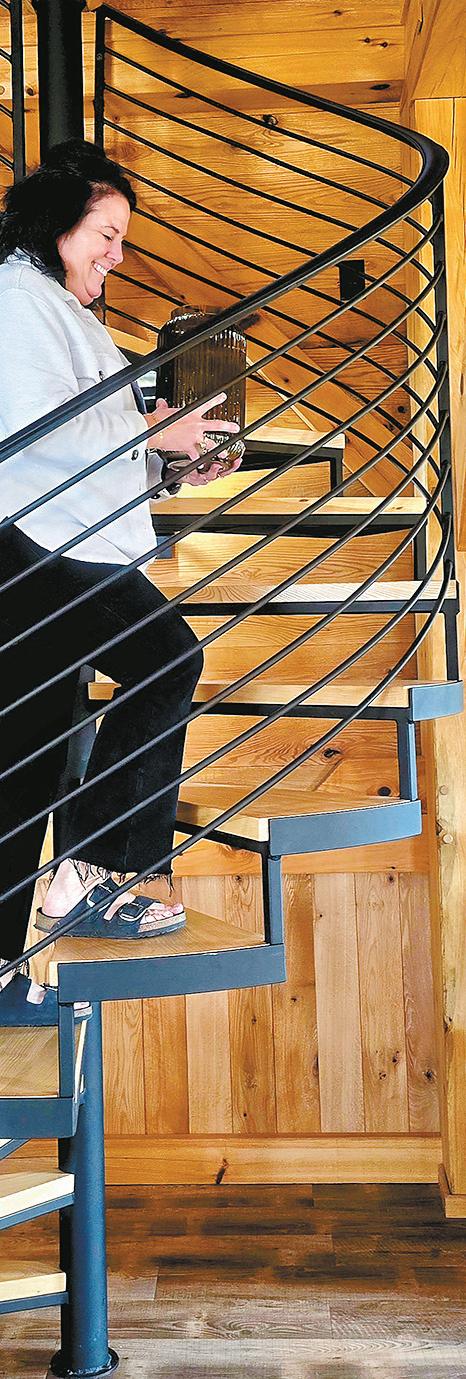


MillCreek Barn is also centered in the couple’s 55acre plot. The inspiration behind the rustic red barn venue was found online years ago. It was designed to resemble a little wine shop in Virginia.
Lisa said the concept just stuck with her.
The location of MillCreek Barn was that of an old barn on the property.
“That got knocked down in 2010,” Lisa said. “We had nothing here and I wanted a cute little barn.”
Friend, Dean Lange owns Stoney Ridge Lighthouse and Stoney Ridge Treehouse in Burtrum. He helped construct the new barn. It was finished in the spring of 2020. Its inner walls consist of red oak. Its beams are white pine.
“The red oak was from around this area,” Jim said. When their daughter saw the barn, she asked if they could have their wedding reception in it. That was how parties at MillCreek Barn got started. It turned out to be the perfect venue.
“I started renting it out last spring,” Lisa said. “We sold our welding business, so I had a little more time to do that. Then, we had our other daughter’s wedding reception here this past fall.”
Brianna (Herdering)
Herdering page 3

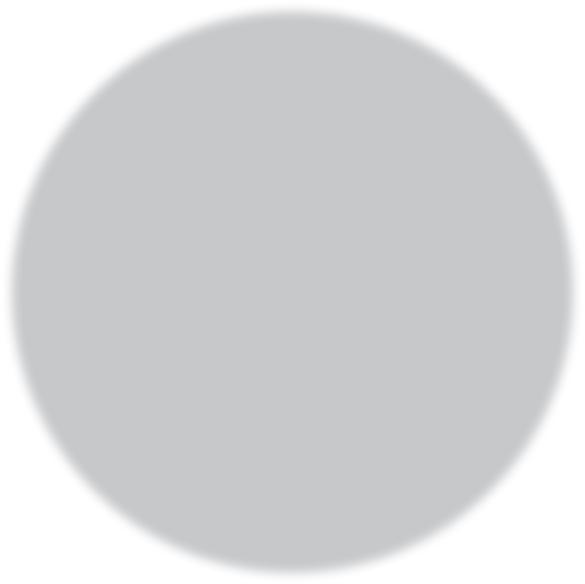






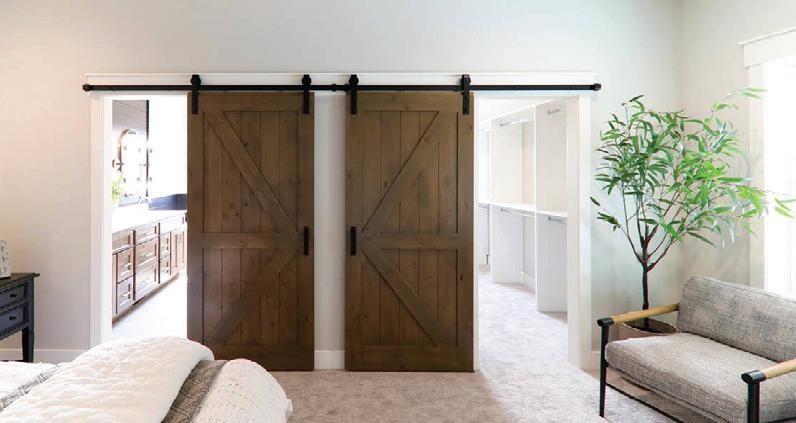








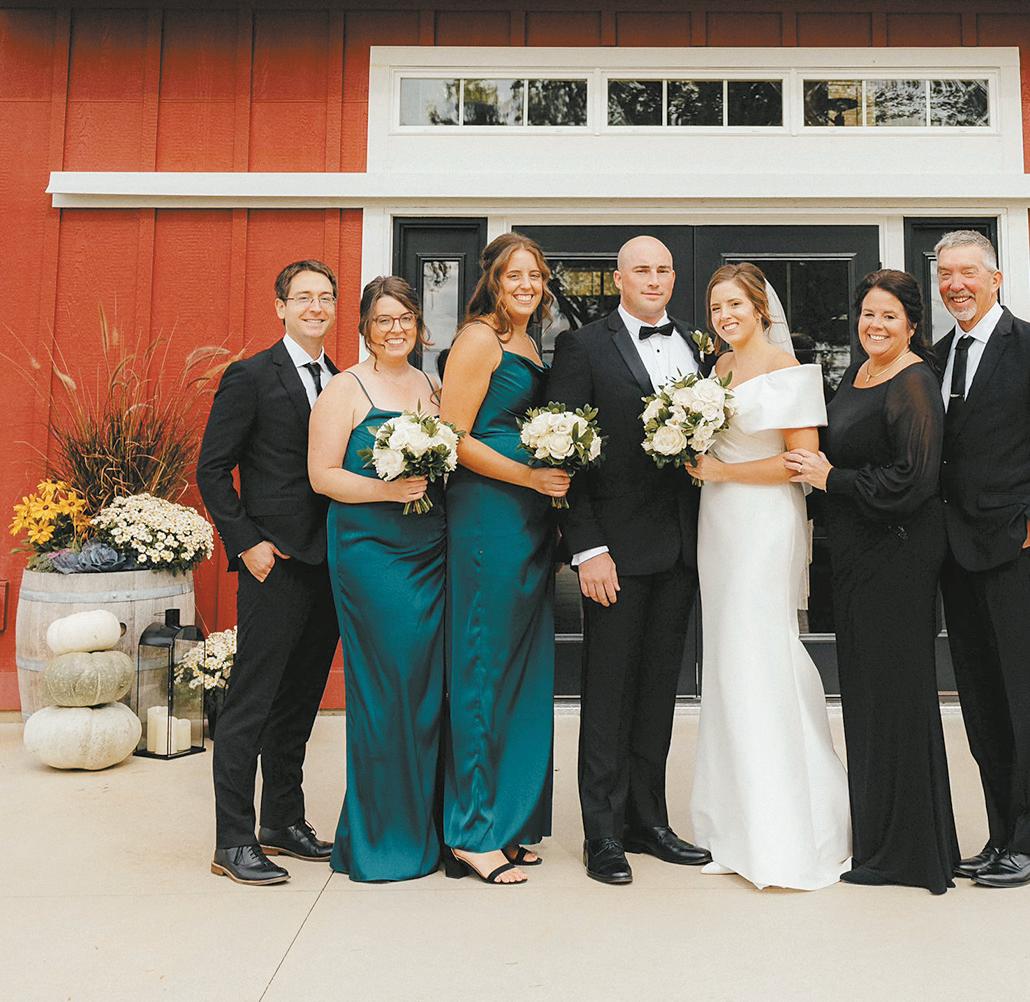

Megan Buness, Emily Herdering, Will Hays, Brianna Hays, Lisa
and Jim Herdering celebrate the Hays wedding Oct. 7, 2023 at MillCreek Barn near St. Rosa. Lisa Herdering has hosted many receptions and parties at MillCreek.
Hayes got married on Oct. 7, 2023.
Emily Herdering, the couple’s third daughter, has helped prepare many events.
The property originally belonged to Jim’s uncle, Ambrose and Bertha Herdering, until 1996. He farmed and manufactured machine parts on the land.
“I grew up about a mile-and-half down the road,” Jim said.
After purchasing the property, Jim and Lisa started their own business in 1996. It was called Millwood Metalworks. In 2006, they built a shop in Freeport and moved the business. They sold it two years ago.
“It takes hard work and dedication to run a small business and raise a family,” Lisa said. “There were many hard times and also many rewards that we are each very grateful for. “
The barn was not built with a plan but rather a dream involving community and a cute little barn.
“I have come to realize that you don’t always have to have a plan because the ‘plan’ might be in the works before you realize it,” Lisa said. “We have met many wonderful people who adore the barn’s warmth and the glow of the lights at night as much as we do; we are excited to continue to meet so many more.”







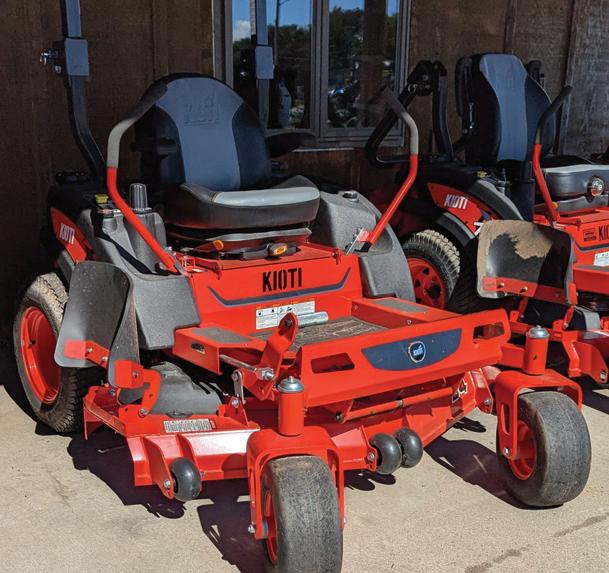




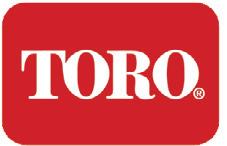




















BY EMILY BRETH STAFF WRITER
KIMBALL— Kevin and Erin Donnay’s six children — Emma, Ellie, Elizabeth, Ryan, Timmy and Adam — keep the family busy with an abundance of projects to complete and register for the Meeker County Fair.
“It is very time consuming,” Erin said. “When we first started, it was just Emma, so it was easy to keep track of her projects and presentations. We homeschool, so a lot of the things (projects) we incorporate into our school year.”
As more of the kids got involved in 4-H, Erin created a system to keep track of all the different projects each child will complete.
“In October, we sit down and have a brainstorming session and figure out what they all want to do,” Erin said. “The kids write a list and set a goal for what they want to do, then throughout the school year, they update that list and adjust it as needed.”
When it comes to project scoring, Erin said something she found many people do not know is that projects




aren’t just judged solely on appearance.
“4-H projects are based 50% on the project and 50% on an interview with the creator of the project,” Erin said. Emma and Ellie have also participated in the Science of Agriculture Challenge, where they must identify an issue in agriculture and present a solution or innovation. They earned a trip to the National 4-H Conference Center in Washington D.C. in January 2020.
While in Washington D.C., they attended workshops and listened to presentations about college and career opportunities. The follow-

ing year, the girls did it again, this time online, and received a scholarship for their achievements.
Along with projects, the three girls and Adam all show livestock. The girls show poultry in the brown egg-laying class, ducks in a breeding pen and rabbits. The family has been showing chickens and rabbits for five years and ducks for three.
Nine-year-old Adam is going into his first year showing on his own and will be showing ducks in the breeding pen as well.
Donnays page 6


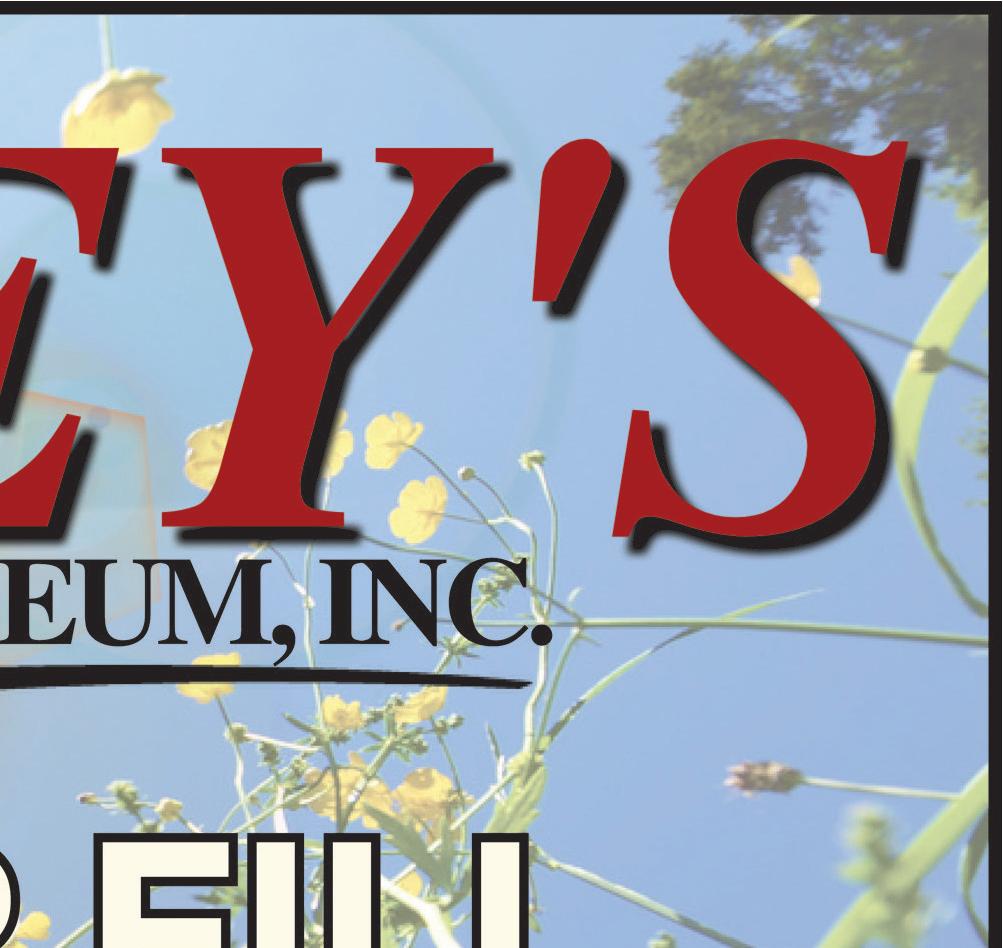

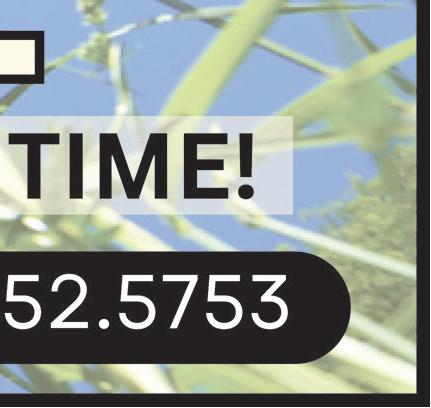





























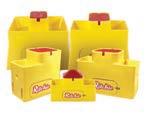



















My favorite things about summer are the amount of daylight and temps above 60 degrees.
I am the type of person who is affected by the light. During the winter, I am often drowsy and not very ambitious in the evenings. I have come to realize this is because it is dark out, and my mind wants to start shutting down early. It is also hard to get out of bed in the mornings during winter.


By
In the summer, I have a lot of energy, ambition and desire to be outside. On days I go to the office, I still have time when I get home to go for a walk with the kids or work in my garden.
Our kids take afternoon naps and are bursting with energy in the late afternoon, and they get another burst of energy after we have supper. Thankfully, we can take them outside and let them run off their energy right to bedtime this time of year. However, it’s sometimes a challenge to convince toddlers it is time for bed when it is still light outside. But once we start the bedtime routine, they usually settle down and go to bed. For me, it is easier to get out of bed in the morning when there is light outside. In the summer, even if the sun is not all the way up yet, there is still enough light to see. Since our bedroom window faces east, the light hits it right before I need to get up.
Growing up on a dairy farm, we did not take many vacations. Instead, we camped in our backyard. We had a tent, sleeping bags, camping dishes and lanterns. We all knew how to pitch a tent, build a fire and make the perfect s’more. It felt so good to sleep under the stars, even though our cats and dog would often come to visit us and
try to open the zipper to get inside the tent. I can vividly remember waking up early with the sunrise, feeling awake and getting up to help with chores right away. Usually, I am not the most bright-eyed and bushy-tailed person at 6 a.m. Waking up to Mother Nature makes all the difference.
Fast forward to today, nights for us right now are even shorter than usual as we have a newborn and two toddlers at home. Our 3-month-old baby gets us up around 3:30-4 a.m. and needs to be fed. My daughter, Allison, is an early bird and typically gets up between 5:30-6 a.m. I try to move about the house as quietly as I can to not wake anyone else. Yet sometimes Allison still wakes up. Thankfully, Jason takes her out to the barn with him so I can try to sneak a few more minutes of sleep in.
Jason also gets up at 5:30 a.m. to go out to the barn. Hopefully, the early-bird momentum keeps up, and in a couple more years, Allison can help with morning chores out in the barn.
It is easier to go outside in the morning since there is daylight so early and the temperature is already comfortable. Like many women, I get cold when the temperature drops below 60 degrees. I try not to complain about it, and instead put on a sweatshirt and get on with my day. On the days I do not have to put on a sweatshirt, it is much simpler for me to go outside. This is because I also do not have to put sweatshirts on three other tiny people.
I do not know about you, but today I am going to go outside and spend some time with family and enjoy summer while it lasts.











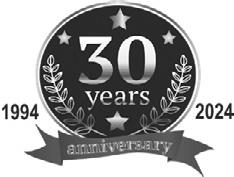













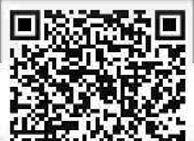





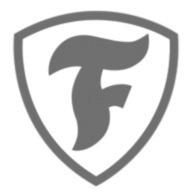




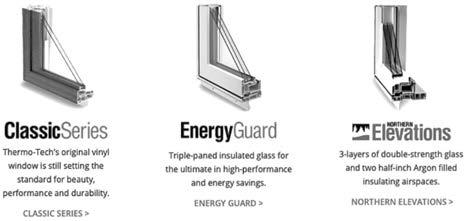










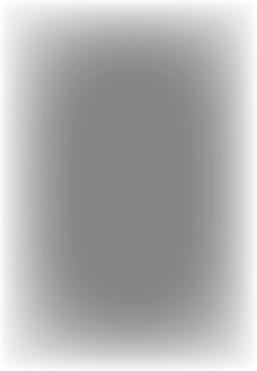










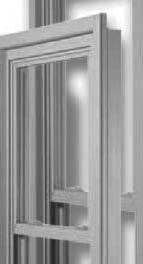









As the poults grow, the kids start to think about which ones they will take to the fair.
“We have to pick the ones that are the same size and as identical as possible,” Elizabeth said. “The biggest learning curve with ducks wasn’t the showing process. It was that they always need to have a tub of water to drink and sometimes splash in and cannot be by the chickens.”
Come fair time, the kids give the chickens a bath and scrub their feet with a toothbrush before drying them off.
“For the laying hens, we have to make sure they will be laying eggs and are in good shape by the fair,” Emma said.
There are only a few things they need to pay attention to when they get to the show.
First, Emma said, the wings of the poults are always held when handling the animal so they do not flap and damage their wings. During the show, the poults spend most of their time in the cage. However, anytime the bird is removed from the cage, it needs to be put back in headfirst to prevent any harm to the poults or handlers.
For the rabbits, some need to be groomed daily, and, as it gets closer to show, their nails are clipped. The registration process starts early for the Donnay family. This year they have just under 50 projects to enter.

“Normally we are up around 100 projects (for the family),” Erin said. “I print off registration slips so we can double check them and then highlight them on their list. Each kid has their own 4-H bag they put their projects in to signify it’s done.”
After many years of having a system, Erin said she enjoys helping other families get into the swing of 4-H and figure out what they all want to do.
“I was not in 4-H, so I remember being very overwhelmed and not knowing what to do,” Erin said. “Being able to help these other families get started and seeing their kids
Elizabeth Donnay holds one of their show rabbits July 1 at her parents’ farm near Kimball. The Donnay family has been showing rabbits and chickens for five years.



Emma Donnay demonstrates how to display a poult’s wings July 1 at her parents’ farm near Kimball. When picking out their poults, the kids look for hens that are as identical and equal in size as possible.

at the Minnesota State Fair is (heart) warming to me.”
Erin also said she is proud of how much her kids have grown and learned throughout their years in 4-H.
“We started 4-H when (now 19-year-old) Emma was in kindergarten, and she was very shy,” Erin said. “I had some cousins in 4-H and noticed they had public speaking skills and were outgoing, so we signed up for 4-H. Her first competition, she whispered into the judge’s ear. Throughout the years, she developed those public speaking skills. That, to me, was rewarding.”



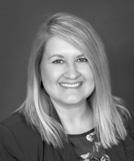



















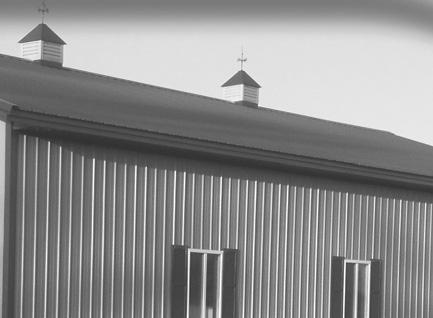









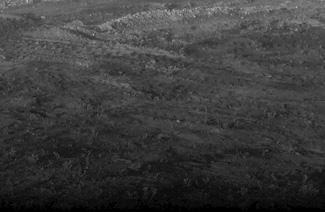

























































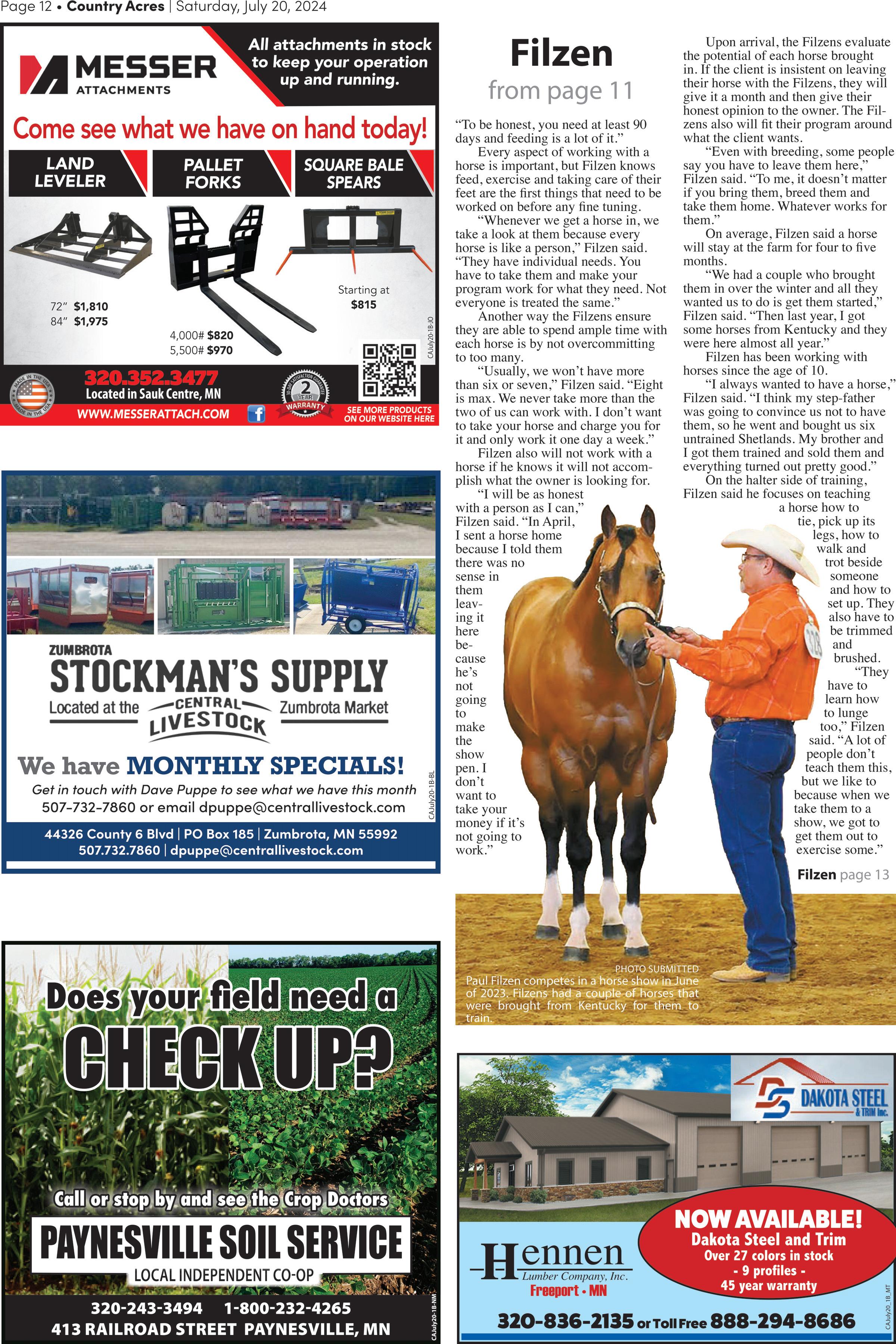


















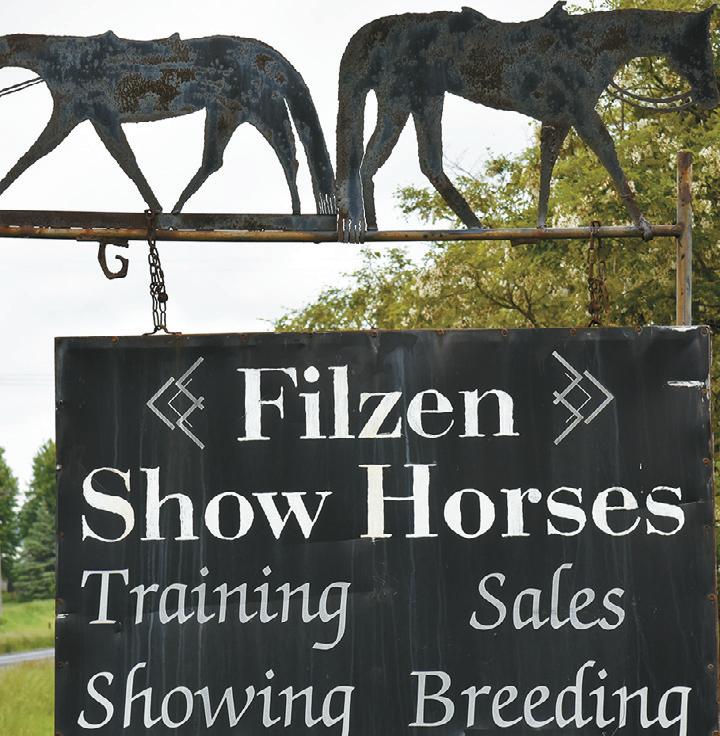
from page 12
There are many steps the Filzen family takes to ensure they do the best they can.
The one day of rest a week, Filzen said, is an important part of the training routine.
“When you take them home, don’t put a blanket on them and leave a blanket on all year long,” he said. “If you do that, you’re going to lose their mind. You can’t keep them in a stall 24/7.”
While working with a horse, whether it be brushing, feeding, conditioning, teaching them how to tie or how to lunge, the family works with each animal as much as needed.
While Filzen enjoys each step in the process, through his years of experience, he has one part that stands out to him.
take
“I enjoy fitting the horses,” Filzen said. “Taking them from this hairy, out-of-shape horse and turning them into something we can show. It is more about conditioning and making them look like an athlete.”




































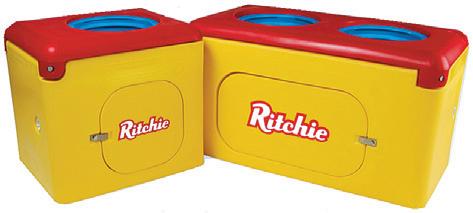




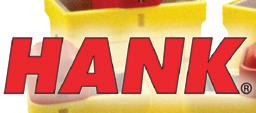

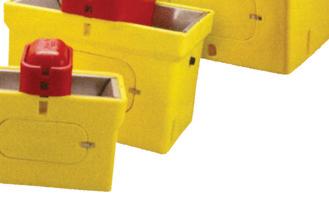






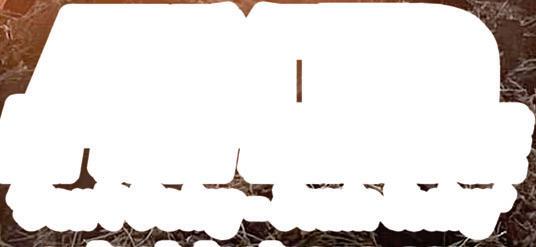































BY BEN SONNEK STAFF WRITER
GROVE CITY — Greenhouse season may be over at Martin’s Produce & Greenhouse near Grove City, but the growing season is still well underway. The owners, Melvin and Anna Martin, have run this farm for 14 years, and with how well this year’s sales are going, they are on track for continued farm expansion until they can reach their goal of living off the business.
“You can see how empty our tables are getting,” Melvin said. “This greenhouse was packed. … It was a really good year.”
Growing up in Missouri, Anna helped a friend with their greenhouse when she was in her early 20s.
“When I was working, I never thought I’d have a greenhouse business myself, but it has happened,” Anna said.
Melvin and Anna married in 2009. The following year, they built their first greenhouse and raised tomatoes and peppers.
“(The greenhouse) started as a personal endeavor,” Melvin said. “People liked what we had, and they wanted to come and buy.”
The Martins kept adding greenhouses every year for several years, and they regularly expand and renovate them. They currently have three main greenhouses. They heat the greenhouses with a wood boiler but also use a gas/propane burner for the colder nights. One of the buildings holds a total mixed ration feeder, typically used for cattle feed, but used here to mix soil for the plants.
The greenhouse season at Martin’s Produce & Greenhouse lasts
from about mid-April to mid-June. During that time, the greenhouses hold a wide variety of produce and flowers.
“About 99% of what we do are annuals,” Melvin said. “We don’t mess with perennials at all because that puts us in a different ballpark. Eventually, we’re going to.”
After the greenhouses are closed, the outdoor fields continue growing tomatoes, peppers, cucumbers, asparagus, broccoli, cauliflower, cabbage, zucchini, green beans, sugar snap peas, sweetcorn, beets, carrots, dill, horseradish, potatoes, sweet potatoes and more. Many of the plants grow through plastic sheeting with holes so the plants can thrive with minimal weeds.
“I’d hoped we could get this all tilled by now, but with two people running the show, it takes a lot,” Melvin said. “We should’ve been done laying plastic, but with the wet year, what do you do?” Unfortunately, the wet year also rotted two-thirds of the potatoes, so the Martins have already started a second planting. They mainly grow Dakota Pearl and Alaskan Yellow potatoes.
Martins page 16



























































down coyotes but small and friendly enough to welcome people who stop by the greenhouse.


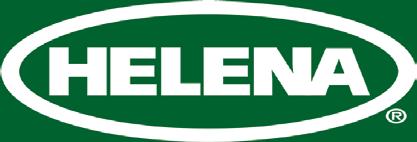
“I prefer (Dakota Pearl) over Kennebecs because, in a little bit of sunlight, they will not green like Kennebecs,” Melvin said.
Minnesota has had drought summers for the past several years, but the Martins did not mind because they live on dark, heavy soil that retains water better than sandy soil. With this year’s wet spring and summer flooding out some of their crops, they are looking into tiling their fields this year, so they drain better. Fortunately, the recent sun and warmth have drastically improved their growing conditions.
The Martins’ day starts around 6 a.m. with tasks as varied as the produce.
“It just goes from the next job to the next, whatever it is,” Melvin said. “We have to rake the hay and get that baled; we’re still not done cutting hay. (We’re) getting ready to plant more sweetcorn — planting number four. It’d be number five, but the first one decided not to come up.”
Aside from the moisture, another factor that has been harming Martin’s Produce & Greenhouse’s produce has been the wildlife, including coyotes, ducks, raccoons and rabbits. Their four dogs, Nellie, Buster, Spotty and Wylan, help keep the critters at bay. They are capable enough to take
As for the insects, such as cucumber beetles, spider mites and aphids, the Martins spray.
“We tried natural, (but with) our size and the small crew we have — me, my wife and one lady helping us in the summertime — it doesn’t justify it,” Melvin said.
Most of the customers for Martin’s Produce & Greenhouse come from within a 50-mile radius. But people have come from northern Minnesota, North Dakota and Iowa as well.
The Martins also sell at a nearby farmers’ market, held every Wednesday and Saturday — weather permitting — from the first Wednesday after Memorial Day through the last
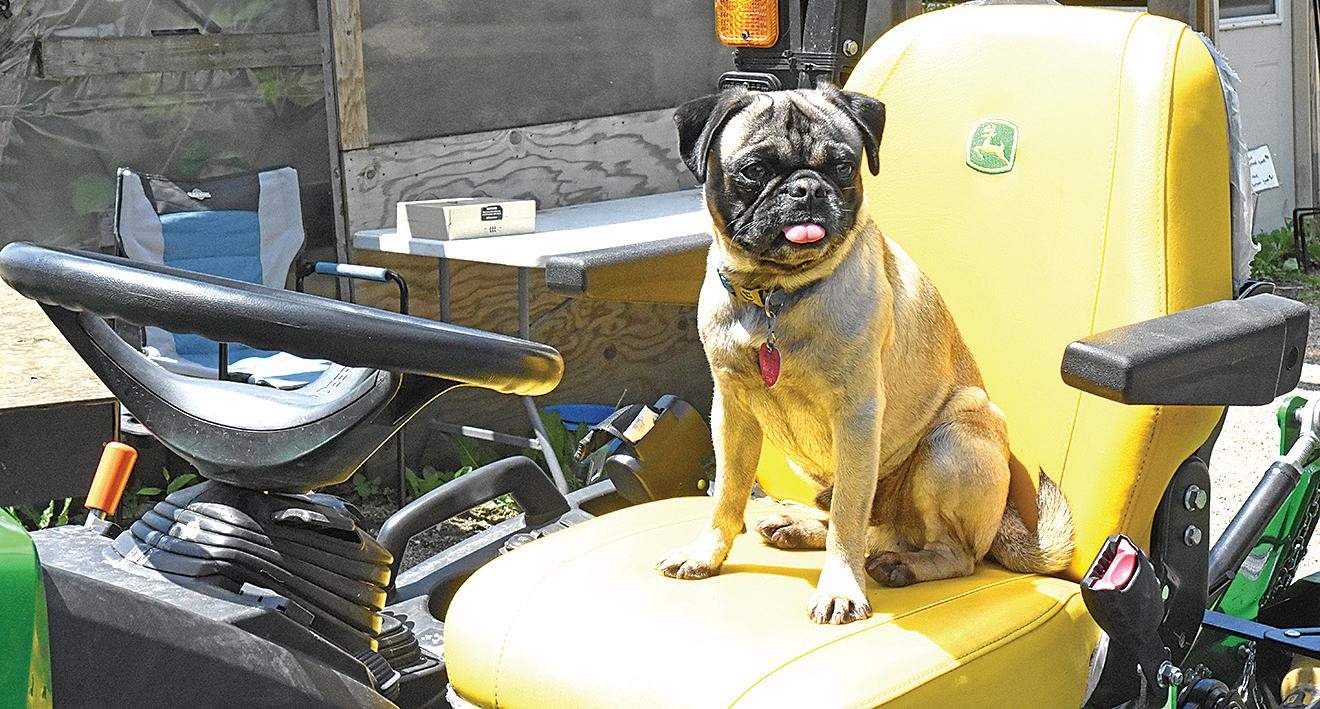





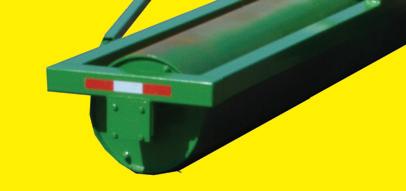























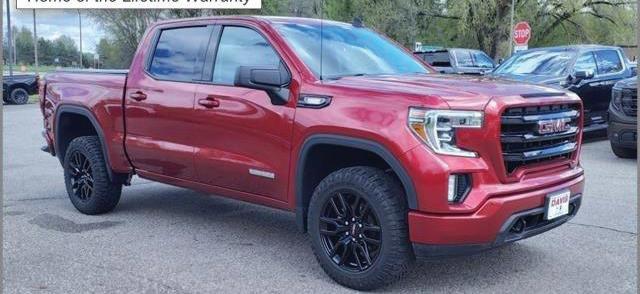





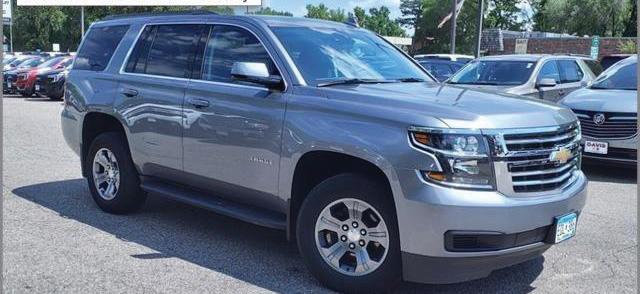


“My sister started it two years ago in summer 2022, and I helped her a lot with starting it up,” Luetmer said. “She bought it as a coffee trailer from a business in Portland, Oregon, and completely redid the truck and rebranded it.”
Abbie drove to Oregon to pick the truck up and bring it back. It was also her idea to have everything be homemade — a concept that holds true today.
“The syrups, the sauces, the chai concentrate, lemonade, donut batter, roasted coffee beans, everything is homemade except for our ice cream, which is still Minnesota based,” Luetmer said. “My whole family has celiac disease, so along with everything being homemade, everything is also gluten free.”
June 27 in Glenwood. Kenzie Luetmer, the truck’s owner

When her sister moved to Florida, Kenzie took over the business and is now operating it full time during the summer.
“It was a very easy decision to take it over because of how much fun it is to run,” she said. “It would be nice to continue it until it makes sense to sell it someday, but I’d like to run it until I’m done with college.”
The menu uses ingredients that are specialty items and local products. Luetmer
orders a lot of her products wholesale and organic from Azure Market and sources her dairy locally from Stony Creek Dairy.
“I try to buy (ingredients) locally as much as I can,” she said. “As for my cups and lids, everything is compostable because I like to help the environment.”

just get some coffee and walk around,” she said. “While I do like to stay in one spot, I also like to get around to local events.”
is long, but I’ve gotten used to it,” she said. “The goal is to prepare everything that will last me for the next four days.”

Luetmer was also very intentional about her location, setting up shop next to Lakeside Ballroom Thursday through Sunday from 8 a.m. to 2 p.m.
“I like to have my trailer by the lake so that people can
Along with organic trends and gluten-free products, Luetmer has incorporated different promotions such as punch cards for her customers and a mug exchange — her own personal idea. Customers can bring a mug they want to get rid of and exchange it for a mug left by other customers, a way for old mugs to get a fresh new start.
She plans to bring Wandering Cup Coffee to events in Alexandria, like Pride in the Park and Grape Stomp Festival, as well as events in the Minnewaska area, like Dragon Boats and Waterama.
To prepare for her normal weekend shifts as well as events for the truck, Luetmer does a full day of work in her home kitchen to get her ingredients together.
“The preparation process
During prep days, Luetmer makes her coffee syrups from scratch. She uses a simple syrup base and adds different ingredients for different syrups. She boils ingredients such as cinnamon sticks, chopped hazelnuts, melted marshmallows and lavender buds to help with the strong flavors of the syrups.
Luetmer page 21
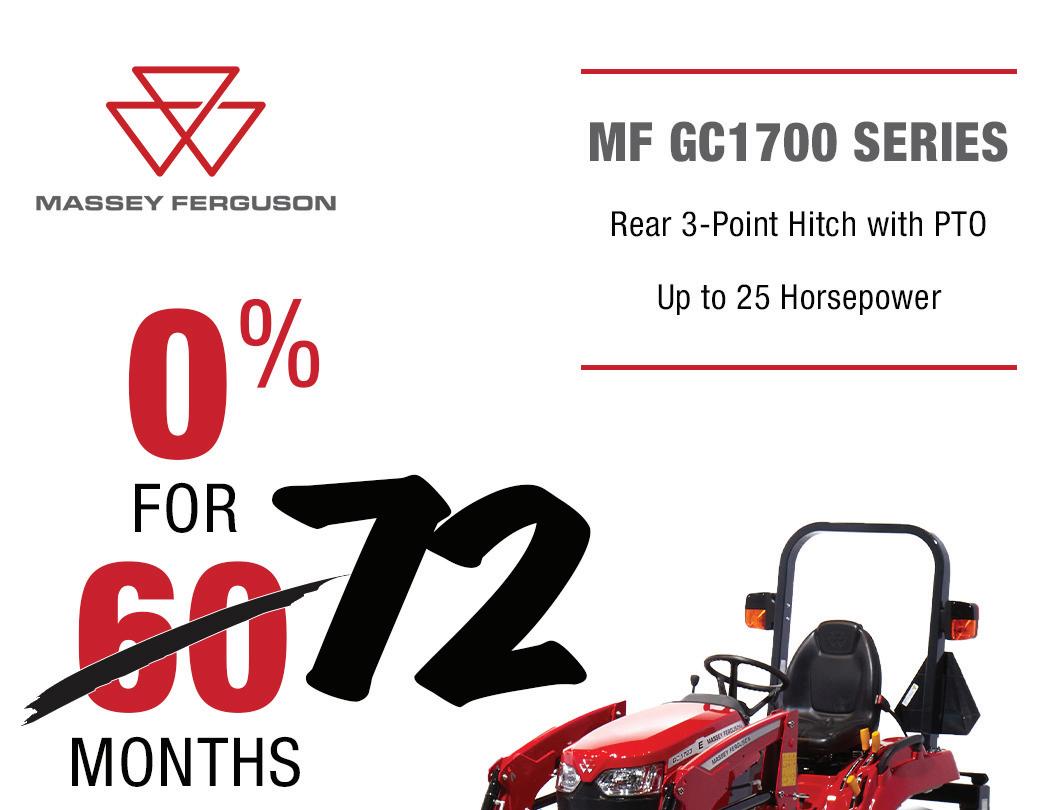
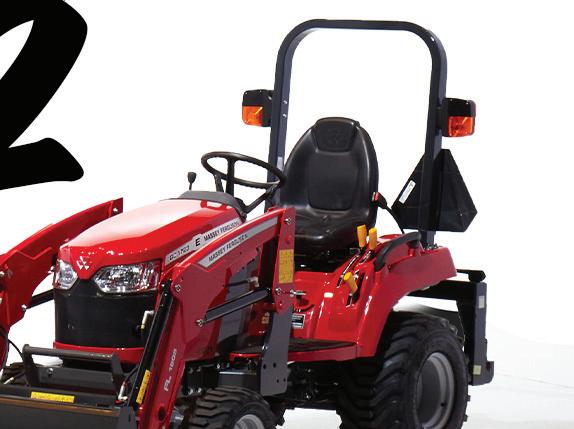






June 27 in Glenwood.
The syrups are made by Kenzie Luetmer from scratch using ingredients such as cinnamon, marshmallows, hazelnuts and lavender buds.


by Luetmer were carefully curated by Abbie through trials and research.
Luetmer also makes her donut batter in advance but waits until business days to make the donuts themselves.
“I make the donuts throughout the day to keep them fresh when people buy them,” she said. “All I do is pour the batter into my donut machine and then dip them in butter and cinnamon sugar.”
Her dad focuses on roasting the coffee beans from scratch, an activity Luetmer says he greatly enjoys.
Menu items and recipes used
“She made a recipe book and went from there, so I just try to follow it as much as possible,” Luetmer said. “Personally, my favorite drink to make from the menu is affogato, and my favorite drink to enjoy is our Lavender Fields Latte.”
Now, as Luetmer holds down the trailer, she looks to continue the business her older sister started back in 2022.
“For the most part, I’m always here,” she said. “It’s a lot of work, but it’s also really fun.” Serving Pope County and the Minnewaska area, Luetmer stays true to the roots of the business, continuing to offer menu items that are local, homemade, gluten free and full of heart.
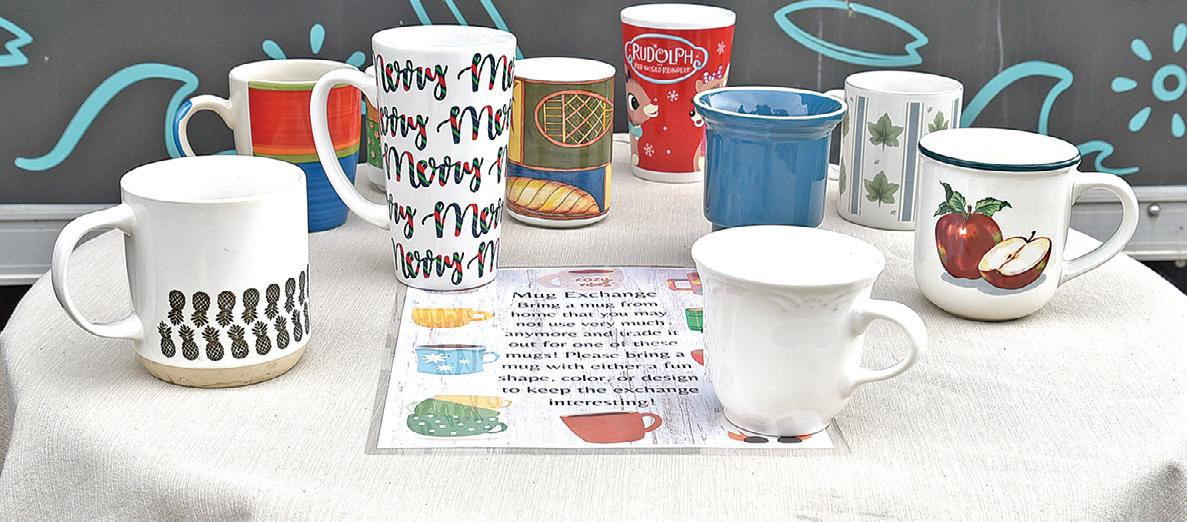
Mugs
Coffee June 27 in Glenwood as part of the truck’s mug exchange. Luetmer came up with the idea at the beginning of the summer.


































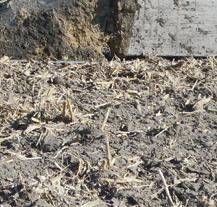





















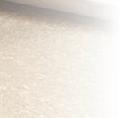
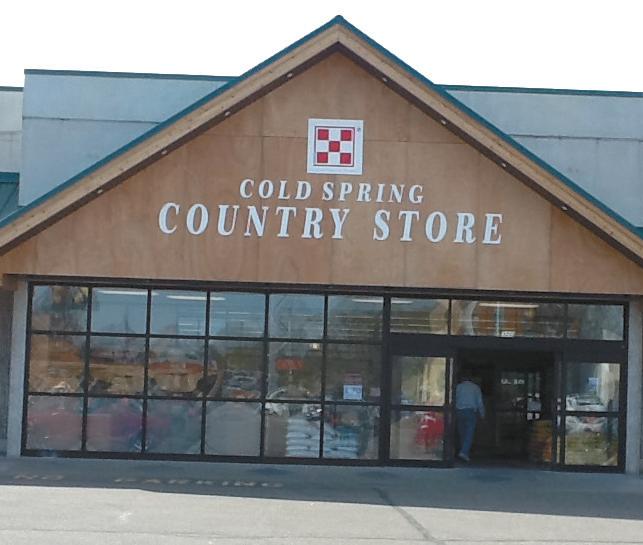








By Jan Lefebvre jan.l@star-pub.com
AVON, Minn. — When asked what his favorite chore has been throughout 91 years of living on his family’s dairy farm near Avon, Alfred Ritter chose an unlikely one.
“My favorite chore was picking rocks because then I could be all alone and nobody would bother me,” Alfred said. “I always think (picking rocks) can keep you in shape with the bending down and picking up.”
Alfred picked rocks until he was 85 years old.
“I think if somebody else drove the tractor, and I would be out in the field, I could still pick,” he said.
However, Alfred no longer needs to pick rocks to stay fit. His passion for walking takes care of that. The shortest walk he takes each day is half a mile, from the house he shares with his wife, Adeline, to the tiestall barn on the farm. There he helps his sons, Glen and Mike, who operate the 385acre farm as the fourth generation. They milk a herd of 80 cows and grow corn and alfalfa. Alfred helps his sons every morning.
“I scrape the aisles, help straw the calf pens and all kinds of stuff,” Alfred said.
For most 91-year-olds, such work each day would be a feat unto itself, but for near-

ly 20 years, Alfred has participated in several 5K races each year, choosing to walk instead of run. Most of those races have taken place during festivals in area towns, but Alfred has completed seven 5K races at Grandma’s Marathon in Duluth.
“I already signed up for
this year,” Alfred said.
When he was 85, Alfred completed all 13 miles of Grandma’s half marathon. Alfred keeps in shape for races by going on long walks every day.
“I walked this morning already,” Alfred said. “I walked three miles.”



Three miles is a short walk for Alfred. He often walks for several hours such as during excursions on foot from his farm to the towns of St. Anna,13 miles away, St. Martin, 16 miles, and Cold Spring, 18 miles. Often, his daughter accompanies him on longer walks and 5K rac-

Ritter page 25























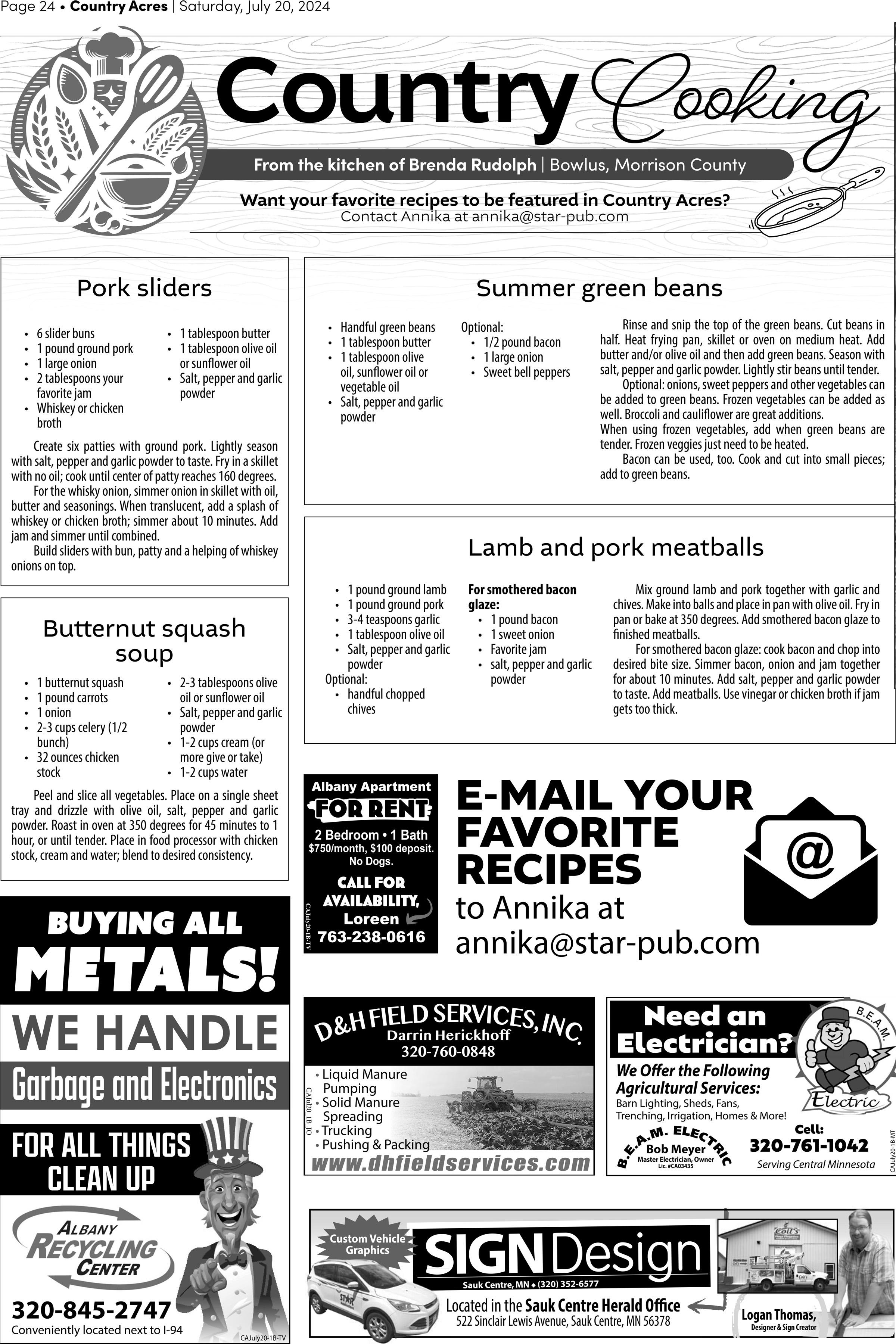

“When he quit milking at 65, he started walking around the fields,” Adeline said. “He didn’t walk on the roads then.”
Alfred agreed.
“I got rid of the (farming) troubles,” he said. “I think that’s why I went walking. I was so glad everything was over — and walking was fun.” The 5K races came a few years later.
“It took quite a while before I had the courage to go,” Alfred said.
When the Ritters handed over the reins of the farm to their sons Glen and Mike, after having farming together from the time they married in 1957 and also raising seven children, Alfred and Adeline found themselves with more time for other things . Besides Alfred’s walking, the couple finally took their first vacations, one to Alaska to visit a daughter and the other to California to visit Alfred’s


Alfred and Adeline have also found more time to reminisce about their farm — homesteaded by Alfred’s grandfather in 1879 —and how much farming has


changed over the years. Alfred’s family was using horses to farm when he was first old enough to help, and prices for farms and equipment were significantly lower.
“My brother-in-law bought a farm near Avon, and it was $8,000 for the cattle and everything,” Alfred said. “My brother’s farm was also $8,000. A bigger farm around there went for $14,000, and my other brother’s farm was $16,000. I spent more to build my barn than it cost for all those farms together.”
The barn he built in 1978 cost about $100,000.
Adeline remembered a time when the old barn they once had needed a new roof and was temporarily covered in plastic.
“It rained hard and leaked through and filled the gutters, so we had to take 5-gallon pails, bail out the gutters and dump it out of the east windows,” Adeline said. “I remember a salesman came by and said, ‘If I had to bail in there, those cows would be in St. Paul (at the stockyard).’ I said, ‘We just got them paid for, so they are going to stay here.’”
It was a time when farmers did not make upgrades or purchases unless they had most, if not all, of the cash in hand.
Ritter page 26


www.coilsflags.com
www.eaglecreekstoragemn.com www.lakecountrygranite.com www.riceareachamber.com
www.weddingtuxedoconnection.com www.osakissilo.com
www.amadorablesapsackholder.com www.appletonsteel.com





































****Offer ends 9/30/2024. Available at participating and eligible dealers only. Offer may vary by product type, series, model and select units in dealer’s current inventory. Must take delivery from dealer stock by 9/30/2024. Offers available on new equipment in US and Canada only. Some restrictions apply. Length of contract and rate may vary. Monthly payment subject to change. Prior purchases not eligible. See dealer for details. Financing provided on approval of credit by authorized Bobcat finance providers to well-qualified buyers. All finance programs and rates are subject to final approval by the applicable Bobcat finance provider and are subject to change at any time without notice. Administrative fees may apply. Offer not available to government accounts, national accounts and municipal/utility bid customers. Bobcat Company reserves the right to extend or discontinue any of these programs at any time without prior notice.


















































































































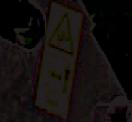





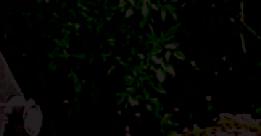
























Nelson preserves beauty through artwork
BY HAILEY HOKANSON STAFF WRITER
ST. CLOUD — As plentiful as they are, flowers don’t last forever. Eventually, they will shrivel up and lose their beauty — unless they are preserved. For a St. Cloud native, a way has been found to protect the memories flowers may bring by creating projects in preservation.




Echo Nelson started her business in 2014, originally naming it High Tide Designs. She would travel around to festivals, selling different metal-based jewelry and crafts out of a Volkswagen bus. In 2019, she decided to add flowers to the mix, changing the name to its current title, Stamped in Flowers. Prior to the focus being pressed flowers, she worked primarily with jewelry.
“I started out making
beaded jewelry, but I started to get kind of bored,” Nelson said. “I didn’t like using the teeny tiny things with my hands, Nelson page 30


















































from page 30
To create the framed art, she uses double-pane glass and presses the flowers inside, often taking about a month to do so. For more intricate bouquet arrangements, she can’t press everything at once, but instead must pick the pieces apart to press individually. After designing it the way she would like, she uses clear glue to fasten it down and lets it dry.
For her necklaces, Nelson uses a resin base to keep the flowers preserved longer and hold them in place.
“For the necklaces, I can take tiny pieces of flowers, design it to look like a flower, and cast it in a resin base,” she said. “Then, I stamp a little flower on it.”
Nelson used to market most of her creations at art crawls and events, but, with her busy schedule, she has slowed her business down. Now, she only advertises her art

White and purple speckled flowers emerge from the leaves July 5 in St. Cloud. Nelson started incorporating flowers into her business in 2019.


for sale on social media whenever she has a spare piece or two available.
However, most of her business comes from custom orders requested through weddings and funerals, which often take a long time to prepare and complete.
As for how she learned to make her creations, YouTube has been a big source of learning for Nelson. But it’s also helped having a large garden around her St. Cloud home, using the blooming flowers whenever the time seems right to create her art.
“Having all these different types of flowers has been nice for trying different things and learning what I like to





use for pressing,” Nelson said. “Keeping all these flowers kind of started with my florist background and grew from there.”
As she continues her business and her love for flowers, Nelson tries to keep the focus on preserving the flowers and limiting waste.
“My biggest thing is keeping things organic and reusing them,” she said. “I like to use all of these flowers as much as possible.”









































48,000Acres Soldinthe Last3Years
In the past 3 years, Weiss Realty closed over 700 transactions which is equivalent to over $300,000,000 in sales volume totaling just over 48,000 acres sold. No other brokers in the Bluff Country can match our results! Properties sold included farms, hobby farms, rural homes with acreage, cabins, campsites, country estates, tillable ground and hunting land. It is a great time to consider selling.
Chisago County - 40 Acres - $89,900 - Sold
Chisago County - 60 Acres - $540,000 - Sold
Crow Wing County - 32.17 Acres w/Home - $399,900 - Sold
Freeborn County - 164 Acres - $299,000 - Sold
Kanabec County - 20 Acres w/Home - $275,000 - Sold
Lyon County - .215 Acres w/Home - $197,369 - Sold
Meeker County - 87.1 Acres w/Home - $835,000 - Sold
Meeker County - 120 Acres - $101,250 - Active
Mille Lacs County - 20 Acres - $159,900 - Active
Mille Lacs County - 20.07 Acres - $159,900 - Active
Mille Lacs County - 259.7 Acres - $529,000 - Sold
Morrison County - 120 Acres - $432,000 - Sold

Morrison County - 133 Acres - $518,700 - Sold
Nobles County - 200 Acres - $1,220,000 - Pending
Otter Tail County - 6 Acres Waterfront Lot - $130,000 - Pending
Otter Tail County - 7.8 Acres Lake Lot - $89,900 - Active
Otter Tail County - 80 Acres w/Home - $299,900 - Sold
Pine County - 71 Acres w/Cabin - $189,000 - Reduced
Pine County - 220 Acres - $425,000 - Sold
Rice County - 201 Acres - $1,500,000 - Reduced
Scott County - 20 Acres w/Home - $1,200,000 - Sold
Sherburn County - 5.58 Acres Build Site - $174,900 - Sold
St. Louis County - 40 Acres - $41,900 - Sold
Todd County - 68.28 Acres w/Home - $749,900 - Sold
Wadena County - 40 Acres - $99,900 - Sold
Waseca County - 5 Acres w/Home - $485,000 - Sold

